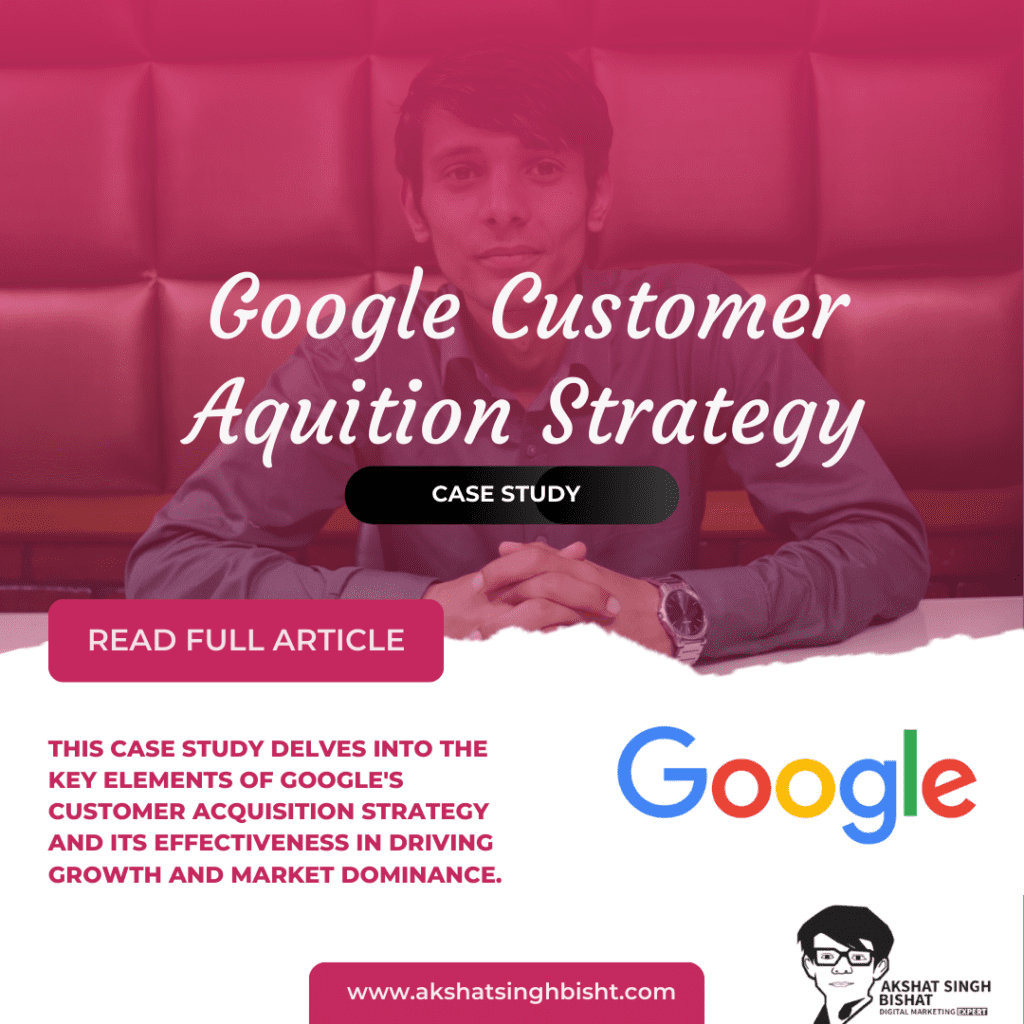Google, a pioneer in digital technology, has implemented a robust customer acquisition strategy that leverages its vast array of products and platforms to attract, engage, and retain users worldwide. This case study delves into the key elements of Google’s customer acquisition strategy and its effectiveness in driving growth and market dominance.

Founded in 1998 by Larry Page and Sergey Brin, Google started as a search engine but has since evolved into a global technology powerhouse, offering a wide range of products and services, including search, advertising, cloud computing, mobile operating systems, hardware, and software solutions.
Google faced several challenges as it sought to acquire and retain users across its diverse product portfolio:
Google’s customer acquisition strategy encompasses several key elements:
Google executes its customer acquisition strategy through a combination of internal efforts and external collaborations:
Google’s customer acquisition strategy has yielded significant results:
Google’s customer acquisition strategy exemplifies the power of innovation, data-driven insights, and cross-platform integration in driving growth and market dominance in the digital age. By continuously evolving its products, targeting strategies, and marketing initiatives, Google has successfully acquired and retained billions of users worldwide, solidifying its position as a leading force in the technology landscape. This case study underscores the importance of customer-centricity, agility, and collaboration in achieving customer acquisition success and sustaining competitive advantage in today’s dynamic and fast-paced business environment.
Akshat’s passion for marketing and dedication to helping others has been the driving force behind AkshatSinghBisht.com. Known for his insightful perspectives, practical advice, and unwavering commitment to his audience, Akshat is a trusted voice in the marketing community.
If you have any questions simply use the following contact details.
